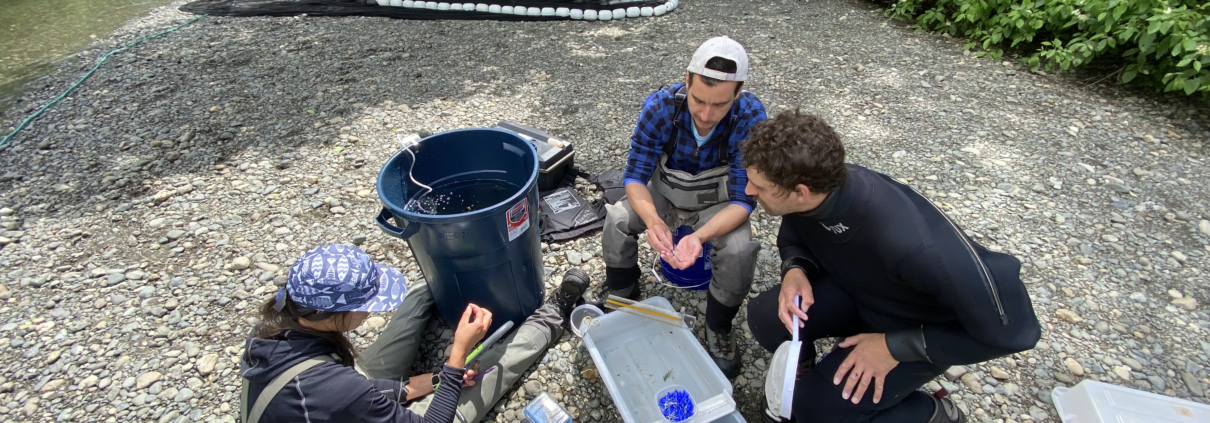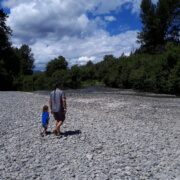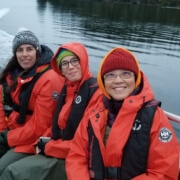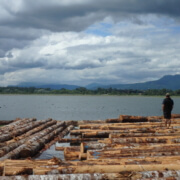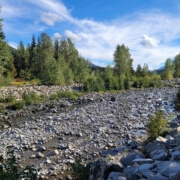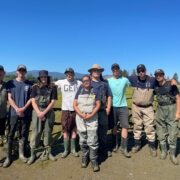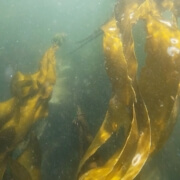Partnering for success
The B.C. Salmon Restoration and Innovation Fund (BCSRIF), a joint investment funded 70 per cent by the Government of Canada and 30 per cent by the Province of British Columbia, supports partnerships to help rebuild and conserve Pacific salmon.
Since the fund was initiated in 2019, the Pacific Salmon Foundation has been working closely with partners on several projects. The funding enables important work to restore and conserve Pacific salmon and their habitat.
Here is a brief update of projects underway:
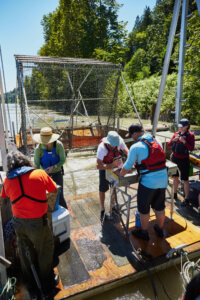
Matsqui fish wheel. (Ron Sombilon)
Climate adaptation
One advanced genetics study of upper Fraser River salmon looks for traits that may be important to conserve. This valuable data is important to inform rebuilding and conservation measures. DNA sequencing is well underway and there are samples from 214 sockeye, 286 Chinook, and 200 coho collected from areas throughout the middle and upper Fraser River watershed.
Salmon and climate
Climate change indicators are being integrated into the Pacific Salmon Explorer – an interactive online mapping tool that provides information on the status and trends of Pacific salmon and their habitats. This information will help decision-makers better understand the current extent and intensity of climate pressures on salmon, vulnerability of specific salmon populations to future climate changes, and prioritize strategies for mitigating these pressures and enhancing the resilience of salmon.
Hatchery effectiveness
Comprehensive reviews of hatchery release strategies have recently been published. They include recommendations to improve hatchery management while minimizing risks to wild salmon. Currently underway are a literature review of salmon hatchery-wild interactions, results of community hatchery interviews, and an overarching synthesis of findings and recommendations with emphasis on risks, benefits, and effectiveness of hatcheries.
Bottlenecks to survival
More than 100,000 fish from nine river systems have been tagged with Passive Integrated Transponders (PIT) tags. This allows for fish tracking and monitoring to learn what factors are impacting their survival.
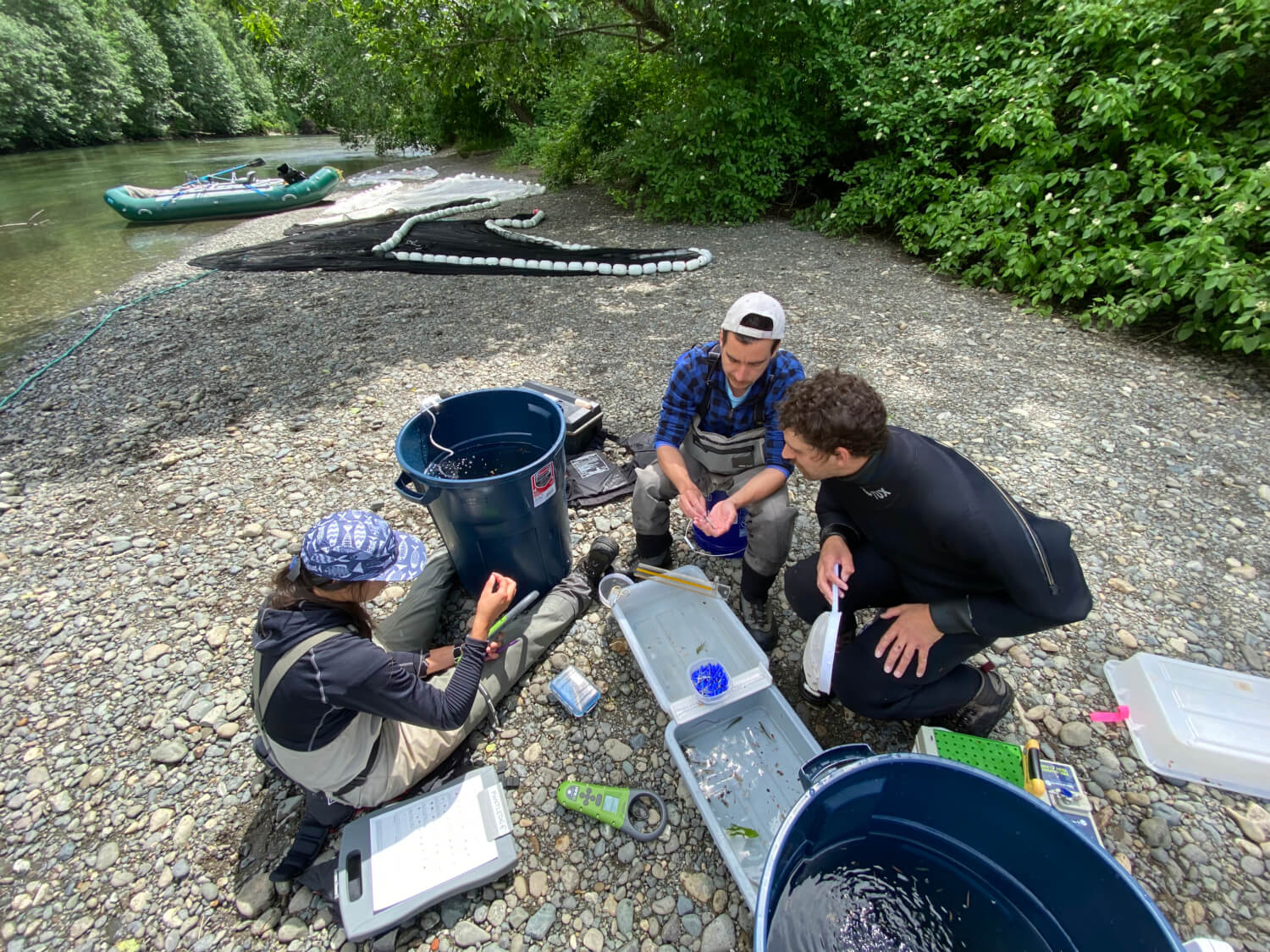
Using artificial intelligence to count salmon
Developing artificial intelligence (AI) software to automate the counting and identification of salmon from video and sonar data will not only eliminate the need to review hundreds of hours of data post-season, it will also provide critical in-season information on salmon returns.
In August, Fisheries and Oceans Canada and the Province of British Columbia announced the expansion of the BCSRIF with key priorities in improving salmon health and ensuring a sustainable fishing sector.
“We welcome the renewal of the BCSRIF and value the fact that B.C. and Canada are jointly investing in partnerships with organizations like PSF. We are using these funds to catalyze projects with our Indigenous, community, conservation, and university partners to help rebuild our Pacific salmon populations that are struggling the most,” says PSF CEO and President Michael Meneer.
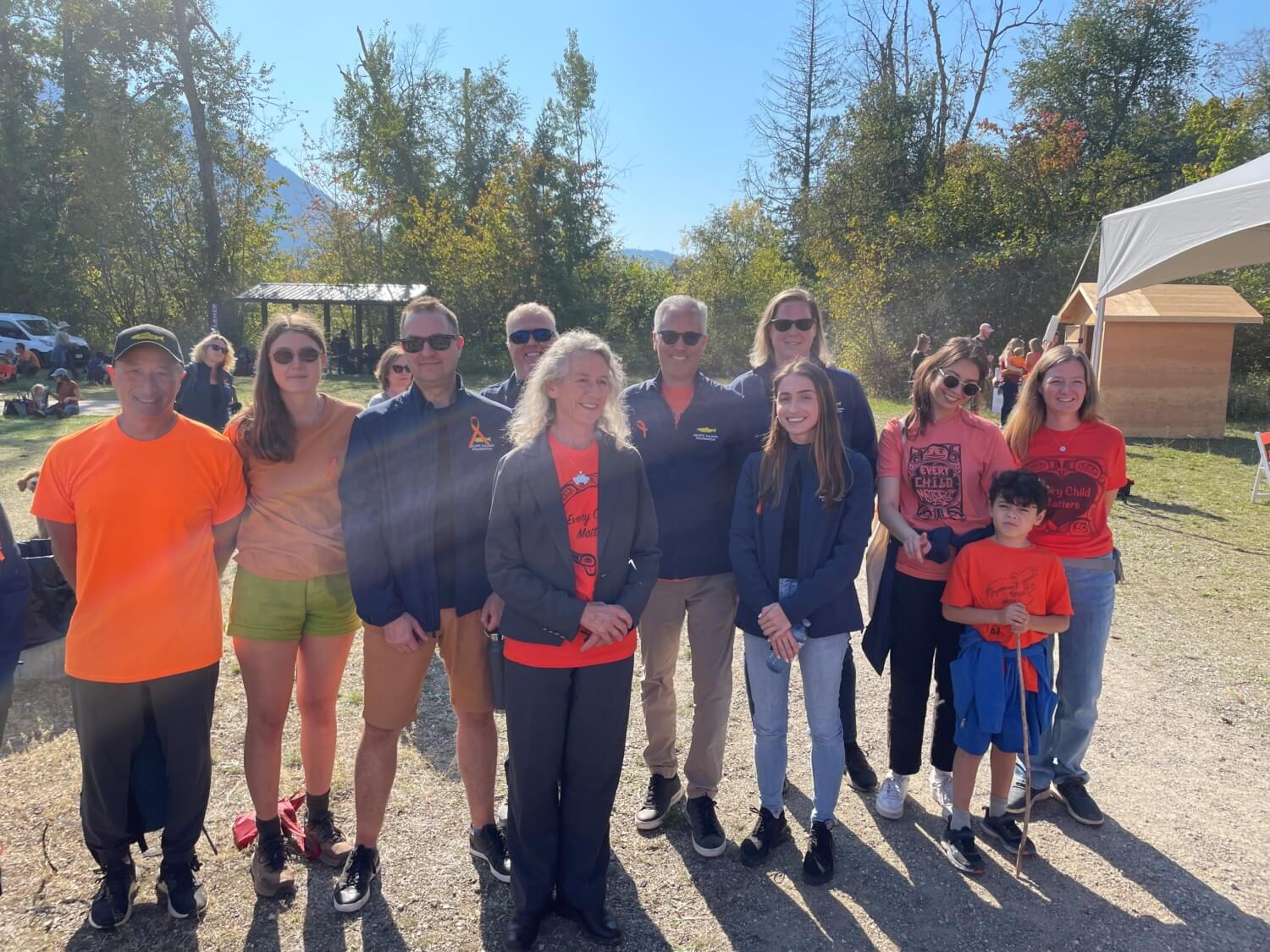
DFO Minister Joyce Murray (centre) with PSF team at the 2022 Salute to the Sockeye Festival.

